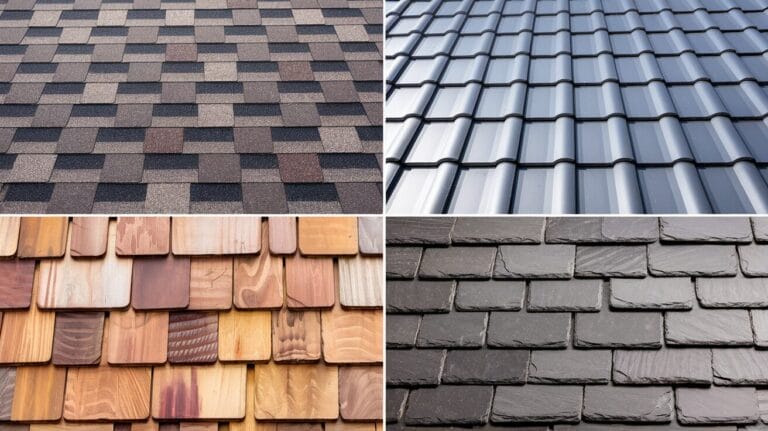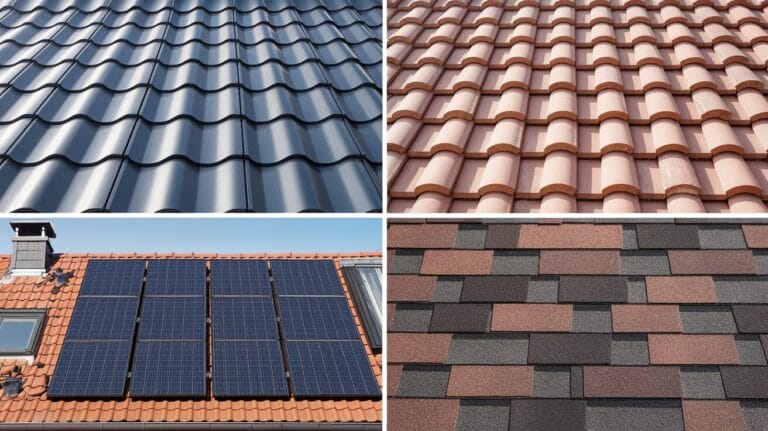
Metal roofs have been gaining popularity for their durability, energy efficiency, and aesthetic appeal. However, there has been some concern about how a metal roof may impact cell phone reception.
In this blog, we will explore the relationship between a metal roof and cell phone signals. We will discuss how cell phone signals work, the potential impact of a metal roof on signal strength, and ways to improve cell phone reception in buildings with metal roofs.
- How Cell Phone Signals Work?
- The Impact of Metal on Cell Phone Reception
- How to Improve Cell Phone Reception with a Metal Roof?
- Alternative Options for Cell Phone Reception in Metal Roof Buildings
How Cell Phone Signals Work?
To understand the potential impact of a metal roof on cell phone reception, it’s important to have a basic understanding of how cell phone signals work. Cell phones transmit and receive signals through radio waves. These waves use frequencies within the electromagnetic spectrum to carry information from one device to another.
When you make a call or browse the internet on your cell phone, the signal is sent to a nearby cell tower. The tower then relays the signal to its destination.
The Impact of Metal on Cell Phone Reception
There are several ways in which a metal roof may affect cell phone reception. These include the absorption of cell phone signals, reflection and interruption of signals, weakening of signals, and interference from nearby metal objects. Let’s explore each of these factors in more detail.
Absorption of Cell Phone Signals by Metal Roof
One potential impact of a metal roof on cell phone reception is the absorption of signals. Metal is known to absorb radio waves to some extent. When a cell phone signal encounters a metal roof, a portion of the signal may be absorbed by the roof, resulting in reduced signal strength inside the building.
However, the degree of absorption can vary depending on the thickness and composition of the metal roof.
Reflection and Interruption of Cell Phone Signals by Metal Roof
Another factor to consider is the reflection and interruption of cell phone signals by a metal roof. Metal surfaces have a reflective property that can cause signals to bounce off the roof rather than pass through it. This can lead to signal loss or distortion. Additionally, metal roofs may create obstacles that interrupt the path of the signal, such as seams or fasteners. These interruptions can further degrade the cell phone signal.
Weakening of Cell Phone Signals by Metal Roof
Metal roofs can also weaken cell phone signals. As the signal travels through the metal roof, it may experience attenuation, which is the reduction in signal strength over distance. This can result in a weaker signal inside the building, especially in areas farther away from the cell tower. The effect of signal weakening can be more pronounced in buildings with thicker or multiple layers of metal roofs.
Effect of Different Types of Metal Roofs on Cell Phone Reception
Not all metal roofs have the same impact on cell phone reception. The composition and design of the metal roof can influence signal strength. For example, roofs made of ferromagnetic metals like steel may have a greater impact on cell phone signals compared to roofs made of non-ferromagnetic metals like aluminum. Additionally, roofs with insulated panels or metal shingles may provide better signal penetration compared to roofs with solid metal sheets.
Interference from Nearby Metal Objects on Cell Phone Reception
In addition to the metal roof itself, nearby metal objects can also affect cell phone reception. These objects could include chimneys, antennas, or other structures in the vicinity of the building. These objects may reflect or block cell phone signals, causing further degradation in signal strength.
How to Improve Cell Phone Reception with a Metal Roof?
If you are experiencing poor cell phone reception in a building with a metal roof, there are a few steps you can take to improve the signal:
- Use a cell phone signal booster: A signal booster is a device that amplifies the cell phone signal, helping to overcome any signal loss caused by the metal roof. It consists of an outdoor antenna to capture the weak signal, an amplifier to boost the signal, and an indoor antenna to distribute the improved signal throughout the building.
- Install a microcell or femtocell: A microcell or femtocell is a device that connects to your internet connection and acts as a mini cell tower. It allows you to make calls and use data over a Wi-Fi or broadband connection, bypassing any issues with the cell phone signal.
- Move to a location with better signal reception: If possible, try moving to an area of the building where the signal strength is stronger. This could be closer to a window or away from any metal objects that may interfere with the signal.
Alternative Options for Cell Phone Reception in Metal Roof Buildings
If improving cell phone reception within the building is not feasible or sufficient, there are alternative options to consider:
- Use landline phones: Installing landline phones in the building provides a reliable alternative for communication. Landlines do not rely on cell phone signals and can ensure uninterrupted communication.
- Utilize Wi-Fi calling: Many modern smartphones support Wi-Fi calling, which allows you to make and receive calls over a Wi-Fi network instead of relying on cellular signals. This can be a convenient solution for areas with weak cell phone reception.
- Use alternative communication apps: There are various communication apps available that utilize internet connectivity instead of cellular signals. These apps, such as WhatsApp and Skype, allow voice and video calls, messaging, and file sharing over the internet.



